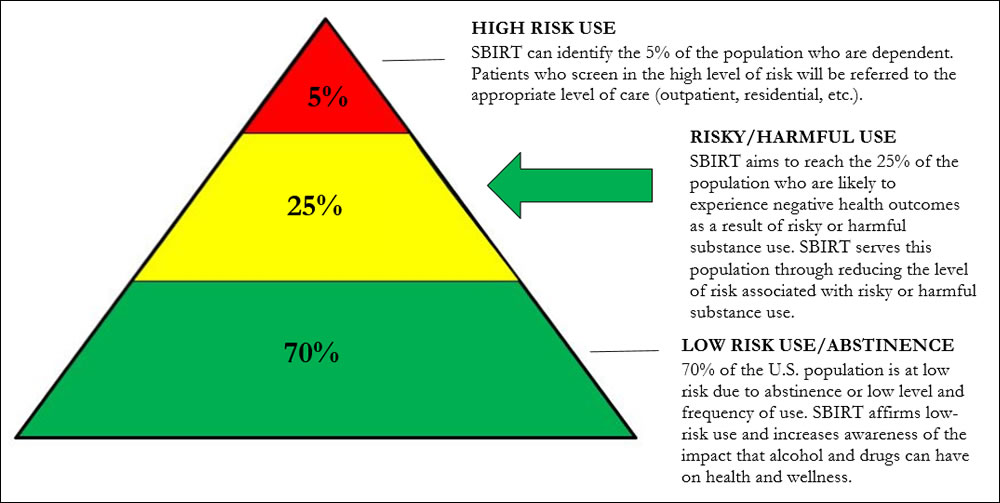Healthcare Professionals: Research
Rationale
There is a wide range of risk associated with substance use. At one end of the continuum is abstinence and low-risk use; at the opposite end are the risks associated with dependence and binge drinking. While the majority of current programs focus on education and treatment (both ends of the continuum), SBIRT aims to reach individuals who are in the middle of the range of risk.

*For more information on low-risk drinking and effects of harmful alcohol use, click here.
Efficacy
Research has found SBIRT to be effective:
- Heavy drinkers who receive a brief intervention are twice as likely to reduce their drinking as heavy drinkers receiving no intervention.1
- Research has found a reduction of 39% in alcohol use and 68% in drug use, and improved levels of general and mental health at 6-month follow up.2*
* Research findings are mixed on the efficacy of brief interventions on drug use; nevertheless, on-going research continues to expand the current understanding on efficacy.
SBIRT is endorsed by:
- The World Health Organization (WHO)
- The U.S. Preventative Services Task Force
- The Committee on Trauma of the American College of Surgeons
- The Substance Abuse and Mental Health Services Administration (SAMHSA)
References
- Wilk AI, Jensen NM, Havighurst TC. Meta‐analysis of randomized control trials addressing brief interventions in heavy alcohol drinkers. J Gen Intern Med. 1997;12(5):274-283.
- Madras BK, Compton WM, Avula D, Stegbauer T, Stein JB, Clark HW. Screening, brief interventions, referral to treatment (SBIRT) for illicit drug and alcohol use at multiple healthcare sites: comparison at intake and 6 months later. Drug Alcohol Depend. Jan 2009;99(1-3):280-295.
